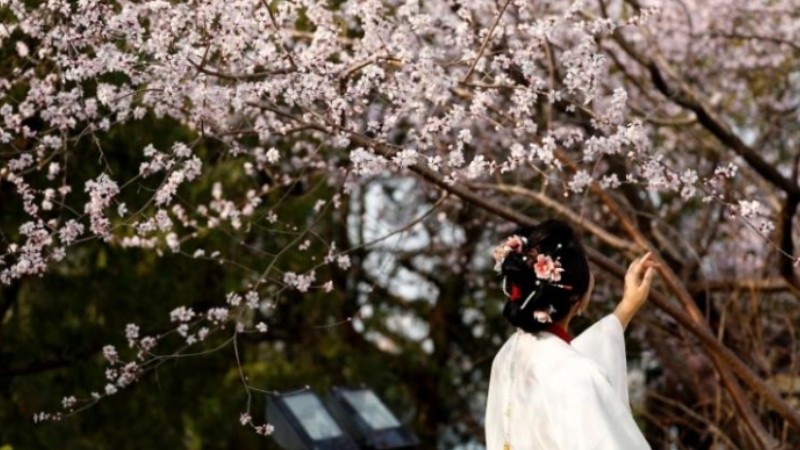Technological advances boost smart farming in central China
WUHAN, March 9 (Xinhua) -- As temperatures began to warm up across China, spring farming is being carried out on the Jianghan Plain in central China's Hubei Province.
Different from traditional farming, vegetable greenhouses in Sanhe Town, Yingcheng City, operate with smart technologies. Drip irrigation systems, weather stations, and sunshade nets there work automatically to regulate the environment to fit growing vegetables.
To improve local agricultural development, Yingcheng invested in a modern agricultural park of more than 200 mu (around 13.33 hectares) in Sanhe, which combines agricultural research, production, and agritourism together.
In each greenhouse that covers an area of 0.23 hectares, thousands of newly planted cherry tomato seedlings are in good order on the soilless substrate and grow vigorously.
"The substrate is soft and loose. It is made from smashed coconut shell," said Liu Quan, technical director of the modern agricultural park, adding that the coconut chaff is featured with good air permeability and is helpful to grow tomato roots.
"Unlike traditional soil which is vulnerable to pests and diseases after years of cultivation, the coconut chaff is less troubled by such problems," said Liu.
In the greenhouses, each tomato plant is equipped with a drip arrow, which is linked to the drip irrigation system.
"Drip arrow is able to regularly eject nutrients into the substrate and fertilize tomatoes by setting the nutrient fertilizing amount and frequency at the drip irrigation system's control center in advance," said Liu.
Near noon, as the sunlight gets stronger, the sunshade net is automatically starting to open to reduce the direct sunlight inside the greenhouse.
"We can detect environmental factors like light, humidity, and temperature in real-time via a full-functional environmental system, which is able to make intelligent corresponding adjustments to ensure that tomato plants grow in an ideal state," said Liu.
Moreover, if there is continuous rainy weather, the supplemental lamps will turn on to supplement lighting. In case of scorching weather, the greenhouse can discharge heat away by starting the ventilation equipment and water circulating system.
"After cherry tomatoes are planted in spring, the harvest period will last from April to next January," said Liu, adding that each greenhouse grows 4,600 tomato plants and can produce about 50 tonnes a year, almost twice the output of traditional tomato cultivation.
Now, the agricultural park has attracted lots of nearby vegetable growers to learn from its experience. "During the harvest season, the park also provides tomato picking activities for the public and it has become an attraction for local people to enjoy themselves," said Jin Yicheng, deputy director of the city's department of agriculture and rural affairs.
Photos
Related Stories
- NW China's "potato land" embraces new technology
- Seeds of hope spring from seawater rice
- China to improve functions of agriculture and rural affairs ministry
- Smart agriculture platform facilitates farming in China’s Henan
- UN official says Chinese Juncao technology holds key potential to contribute to achievement of UN SDGs
Copyright © 2023 People's Daily Online. All Rights Reserved.









